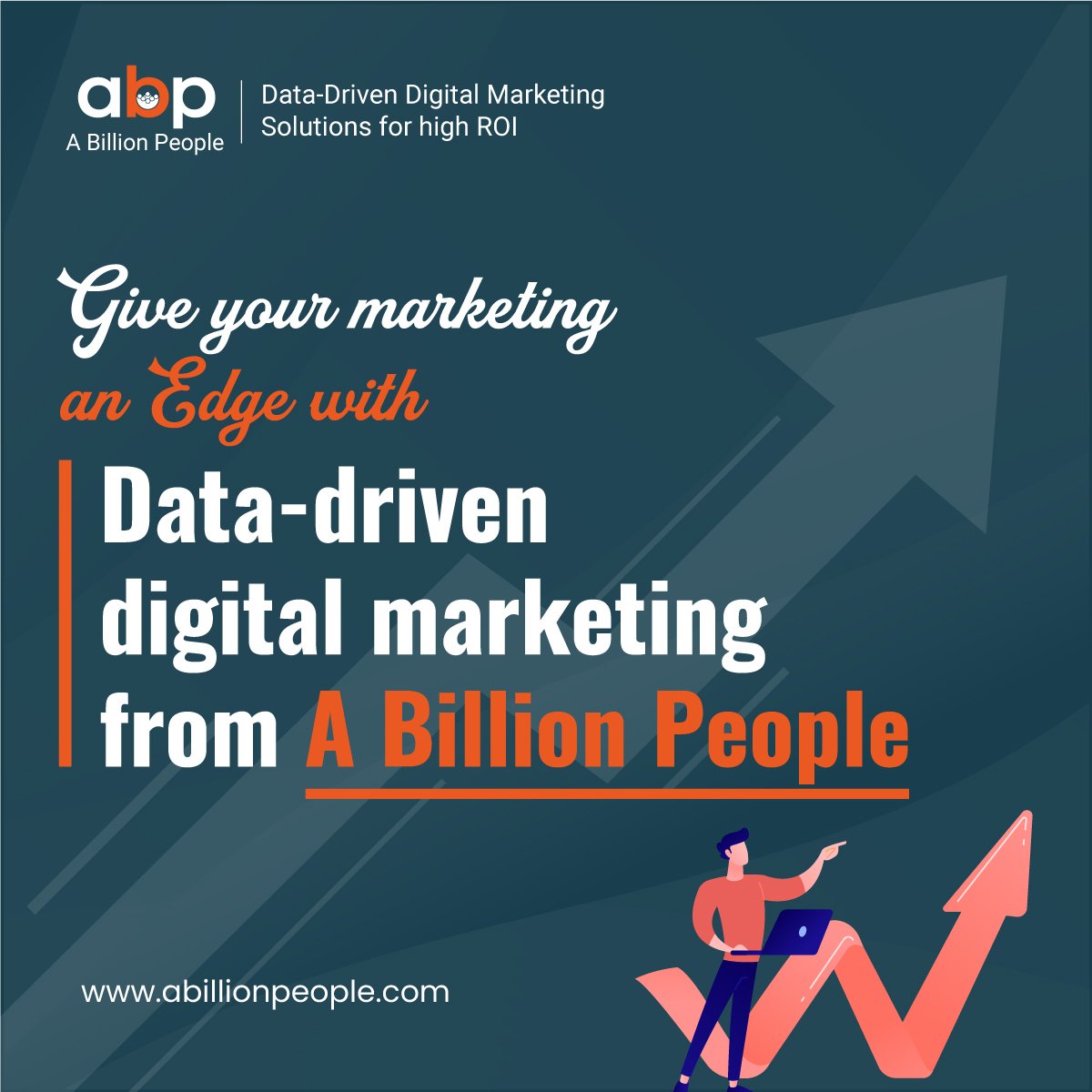“Social media advertising is like a war; you have to know your enemy before you can take them down.” – Gary Vaynerchuk
In today’s digital age, social media has become an integral part of our lives. We live in a world where social media platforms like Facebook, Instagram, and Twitter have billions of users logging in every day. This presents an unprecedented opportunity for businesses to reach a massive audience and promote their products and services through social media advertising. However, it is not enough to simply run ads on social media; effective targeting and conversions are crucial for success.
Understanding Targeting: Reaching the Right Audience
Social media advertising is a powerful tool because it allows businesses to target specific groups of people. In the past, marketers used to advertise to a broad audience and hope for the best, but now, with advanced targeting options, they can reach the right people at the right time.
To effectively target an audience, it’s important for marketers to understand who their audience is. This means knowing their demographics, interests, and behaviours. Demographics include information like age, gender, location, and language. By knowing these details about their audience, marketers can tailor their ads to resonate with them.
Interests and behaviours are another important aspect of understanding an audience. Interests are the things that people like, such as hobbies or favourite brands. Behaviours refer to how people act online, such as the websites they visit or the content they engage with. By knowing their audience’s interests and behaviours, marketers can create ads that appeal to their specific preferences.
By targeting their ads based on an audience’s demographics, interests, and behaviours, marketers increase the chances of conversion. When the right people see ads that are relevant to them, they are more likely to take action, such as making a purchase or signing up for a service. This targeted approach ensures that marketing efforts are focused on reaching the most receptive audience, maximizing the chances of success.
In simpler terms, social media advertising allows businesses to target specific groups of people. To do this effectively, marketers need to understand who their audience is and what they like. By creating ads that speak directly to their audience, businesses increase the likelihood of getting people to take action, resulting in more conversions and success. Press Tab to write more…
Different Targeting Options: Demographics, Interests, and Behaviours
Social media platforms provide advertisers with various options to target their ads effectively. These targeting options allow marketers to focus their ads on specific segments of the population.
Demographics targeting allows advertisers to select specific parameters such as age, gender, location, and language. For example, if you’re selling a product targeted towards young females in a certain city, you can narrow down your audience to those demographics. This ensures that your ads are shown to the people who are most likely to be interested in your product or service.
Interests and behaviours targeting goes even further by considering users’ likes, dislikes, hobbies, and online activities. These targeting options allow you to reach people who have shown an interest in specific topics related to your product or service. For instance, if you’re running a campaign for a fitness app, you can target users who have shown an interest in fitness, exercise, or healthy eating. By targeting users based on their interests and behaviours, you can ensure that your ads are shown to an audience who are likely to engage with and convert through your ads.
This level of granularity in targeting is crucial because it ensures that your ads are only shown to the most relevant audience. When your ads reach the right people who are genuinely interested in your offerings, you have a higher chance of getting their attention and encouraging them to take action, such as clicking on your ad or making a purchase. This means that your ad spend is used more efficiently and effectively, resulting in increased engagement and higher conversion rates.
In simple terms, by using demographics, interests, and behaviours targeting options on social media platforms, advertisers can reach specific groups of people who are most likely to be interested in their products or services. This increases the chances of users engaging with the ads and taking the desired action, ultimately leading to more successful ad campaigns.
Importance of Targeting: Making the Most of Your Ad Budget
Effective targeting in social media advertising is essential for getting the most value out of your ad budget. Targeting involves narrowing down your audience based on factors like demographics, interests, and behaviours.
Why is this important? Well, by targeting your ad to a specific audience, you can make sure that your ads are seen by the people who are most likely to be interested in your product or service. This means that you’re not wasting your budget on showing your ads to people who aren’t likely to be interested or convert.
When your ads are only shown to the right audience, you can expect higher engagement rates and click-through rates. This is because the people who see your ads are more likely to find them relevant and interesting. Higher engagement and click-through rates are great because they can lead to lower costs per click. When more people engage with and click on your ads, the platform you’re using may reward you with lower costs for displaying them. This can improve your overall return on investment (ROI) for your ad campaign.
Effective targeting also helps to boost brand awareness. When people who are most likely to be interested in your product or service consistently see your ads, they become more familiar with your brand. This familiarity can lead to more conversions over time as they become more trusting and willing to engage with your offerings.
By focusing your ad spend on users who are most likely to convert, you can get the most out of your limited budget. This allows you to achieve your marketing goals more efficiently and cost-effectively.
In a nutshell, effective targeting in social media advertising means reaching the right people with your ads, increasing engagement rates, lowering costs per click, and improving your overall ROI. It’s about showing your ads to the people who are most likely to be interested and convert, ultimately helping you achieve your marketing goals more effectively.
The Conversion Puzzle: Turning Clicks into Customers
Getting users to click on ads is just the first step. The real goal is to turn those clicks into customers. To do that, businesses need to create landing pages that are designed to convince users to take action.
A landing page is the webpage that users land on after clicking on an ad. It should be relevant to the ad they clicked on, visually appealing, and have clear messaging that matches what users expect to see.
The landing page should make it easy for users to do what you want them to do – whether that’s making a purchase, signing up for something, or filling out a form. Businesses can achieve this by highlighting the benefits and value of their offerings. They can use persuasive language to convince users that they need what they’re offering.
It’s also helpful to show social proof on the landing page. Social proof includes things like testimonials or reviews from other customers who have had a positive experience with the business. This can help build trust and encourage users to take action.
In addition to the content and messaging, it’s crucial to provide a seamless user experience on the landing page. This means making sure the navigation is easy to understand, the page loads quickly, and the process of taking action is simple and hassle-free.
By carefully designing landing pages, creating compelling call-to-actions, and delivering a seamless user experience, businesses can increase the chances of turning clicks into customers. This ultimately helps businesses achieve their marketing goals and drive growth.
Optimizing for Conversions: Tracking and Measuring Success
Tracking and measuring the success of your social media advertising campaigns is crucial for improving your conversion rates, which means getting people to take the desired action, like making a purchase or signing up for a newsletter. Fortunately, social media platforms have built-in tools that provide valuable insights into how your ads are performing.
One important metric to monitor is impressions, which tells you how many times your ad has been seen by users. If you’re not getting many impressions, it could mean that your targeting is too narrow, and you may need to reach a broader audience. On the other hand, if you’re getting a lot of impressions but not many clicks, it could indicate that your ad content is not compelling enough to engage users.
Click-through rate (CTR) is another key metric to track. It measures the percentage of people who click on your ad after seeing it. A high CTR suggests that your ad is compelling and resonating with your target audience. If your CTR is low, you might need to revisit your ad copy and visuals to make them more engaging.
Conversions are the ultimate goal of your advertising efforts. They represent the number of people who perform a specific action, such as making a purchase or filling out a form. By tracking conversions, you can determine which ads are driving the most results and adjust your targeting or messaging accordingly.
Return on investment (ROI) is another important metric. It measures the profitability of your ad campaigns by comparing the cost of running the ads to the revenue generated as a result. Calculating ROI helps you understand which campaigns are delivering the best results and guide your budget allocation.
By analysing this data from social media analytics tools, you can gain valuable insights into user behaviour and make informed decisions to optimize your ads. For example, if you notice that a certain target audience is converting at a higher rate, you can allocate more budget towards reaching that audience. Similarly, if certain ad elements, such as a specific headline or image, consistently perform better than others, you can update your ads to reflect those successful elements.
Continuous tracking and analysis of your ad campaigns allow you to make data-driven decisions and improve your conversion rates over time. It’s important to remember that social media advertising is an iterative process, and by leveraging the insights provided by analytics, you can maximize the effectiveness of your efforts and achieve better results.
Creative Content: The Key to Conversion
While targeting is crucial for reaching the right audience, it is creative content that truly captures their attention and compels them to take action. In the competitive landscape of social media advertising, businesses have a limited amount of time and space to make an impact and stand out from the crowd. This emphasizes the importance of creating eye-catching visuals that instantly grab the users’ attention as they scroll through their feeds. Whether it’s an intriguing image, an engaging video, or a visually appealing graphic, the creative content needs to be visually compelling and attractive.
Moreover, the copy used in the ad plays an equally important role. It should be compelling, persuasive, and clearly convey the value proposition of the product or service being promoted. Effective ad copy addresses the pain points or desires of the target audience, highlights the benefits or solutions offered by the business, and prompts users to take the desired action. By crafting a compelling message, businesses can generate interest, curiosity, and a sense of urgency among users, which motivates them to click on the ad and learn more.
A significant aspect of creating effective creative content is ensuring that the value proposition is explicit and easy to understand. Users should be able to quickly grasp why they should take action and what sets the business or product apart from the competition. This can be achieved by showcasing exclusive discounts, limited-time offers, unique features, or any other competitive advantage that appeals to the target audience’s needs and desires.
By combining effective targeting with creative content, businesses can develop a powerful advertising strategy. Targeting ensures that the ads are reaching the right audience, while the creative content captures their attention and compels them to take the desired action. When these two elements work harmoniously, businesses can achieve higher engagement, click-through rates, and ultimately drive conversions. Constant experimentation, data analysis, and optimization of the creative content are vital to ensure that businesses are delivering the most compelling and effective ads possible, maximizing their chances of success in the competitive world of social media advertising.
Conclusion:
Social media advertising provides businesses with an incredible opportunity to connect with a large audience and promote their offerings. To make the most of this opportunity, it’s important to understand your target audience and create ads that resonate with them. Additionally, optimizing your campaigns for conversions and delivering compelling content can significantly impact your success.
If you’re in the same field and want to take your social media advertising efforts to the next level, consider these insights. Remember the value of knowing your audience, creating impactful ads, and focusing on conversions. By applying these strategies, you can maximize the effectiveness of your social media advertising campaigns and achieve your marketing goals. Don’t forget to share this information with others in your field, as spreading knowledge and insights can benefit everyone.


















